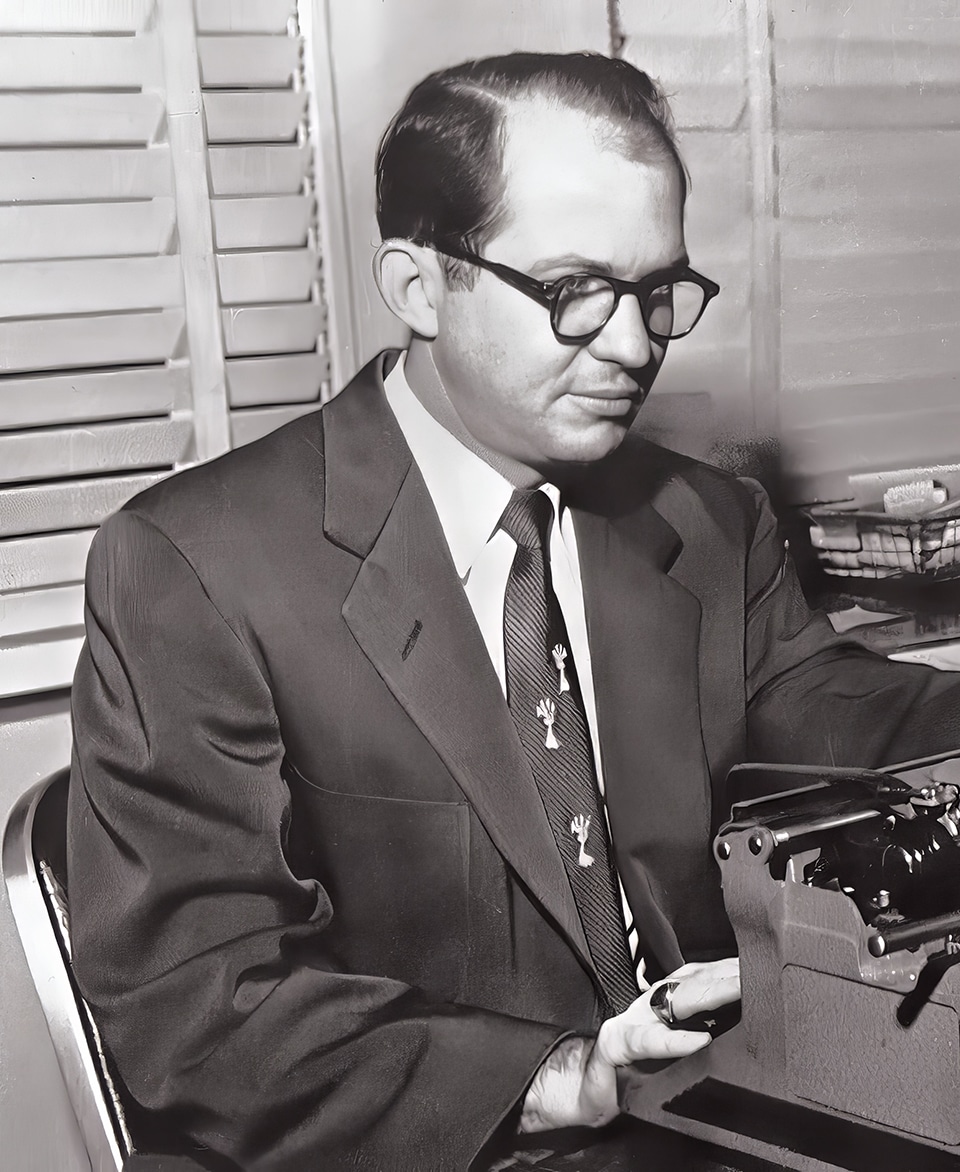RESOURCES
PEOPLE
James Jackson Kilpatrick
1920-2010
James Kilpatrick was a prominent American journalist and syndicated columnist best known in the 1950s for his vocal support of segregation and his role as a leading intellectual architect of Virginia’s “Massive Resistance” movement against school desegregation. Kilpatrick was born in Oklahoma City and raised in Texas. He graduated from the University of Missouri with a degree in journalism and began his career as a reporter. In 1941, he joined the Richmond News Leader, a major Virginia newspaper. By 1950, he became the paper’s editor, positioning him at the center of political discourse in Virginia.
Following the Supreme Court’s landmark 1954 decision in Brown v. Board of Education, which declared school segregation unconstitutional, Kilpatrick emerged as one of the South’s most articulate defenders of segregation. As editor of the Richmond News Leader, he used his influential platform to promote the doctrine of “interposition”—the theory that individual states had the right to “interpose” themselves between federal mandates and state law.
He became a key intellectual ally of U.S. Senator Harry F. Byrd Sr. and Virginia’s Byrd Organization, which led the charge in developing the state’s “Massive Resistance” strategy. Kilpatrick argued that desegregation was not only socially disruptive but also a violation of states’ rights, couching segregationist views in legal and constitutional rhetoric.
Kilpatrick wrote extensively in defense of white supremacy during the 1950s, although often cloaked in legalistic terms. His essays were published in both the News Leader and nationally, lending legitimacy to the segregationist cause. He frequently debated desegregation advocates and sought to provide an intellectual framework for resisting civil rights advances.
Notably, Kilpatrick wrote articles praising the virtues of the South’s racial hierarchy, including a 1956 piece titled The Hell He Is Equal, which defended white superiority and criticized the Brown decision.
By the 1960s and 1970s, Kilpatrick had reinvented himself as a nationally syndicated conservative columnist and television commentator. He gained broader fame as a participant on the TV segment Point/Counterpoint on 60 Minutes, where he sparred with liberal commentators. Over time, he moderated his views, and though he never fully recanted his segregationist past, he distanced himself from its most extreme positions.
